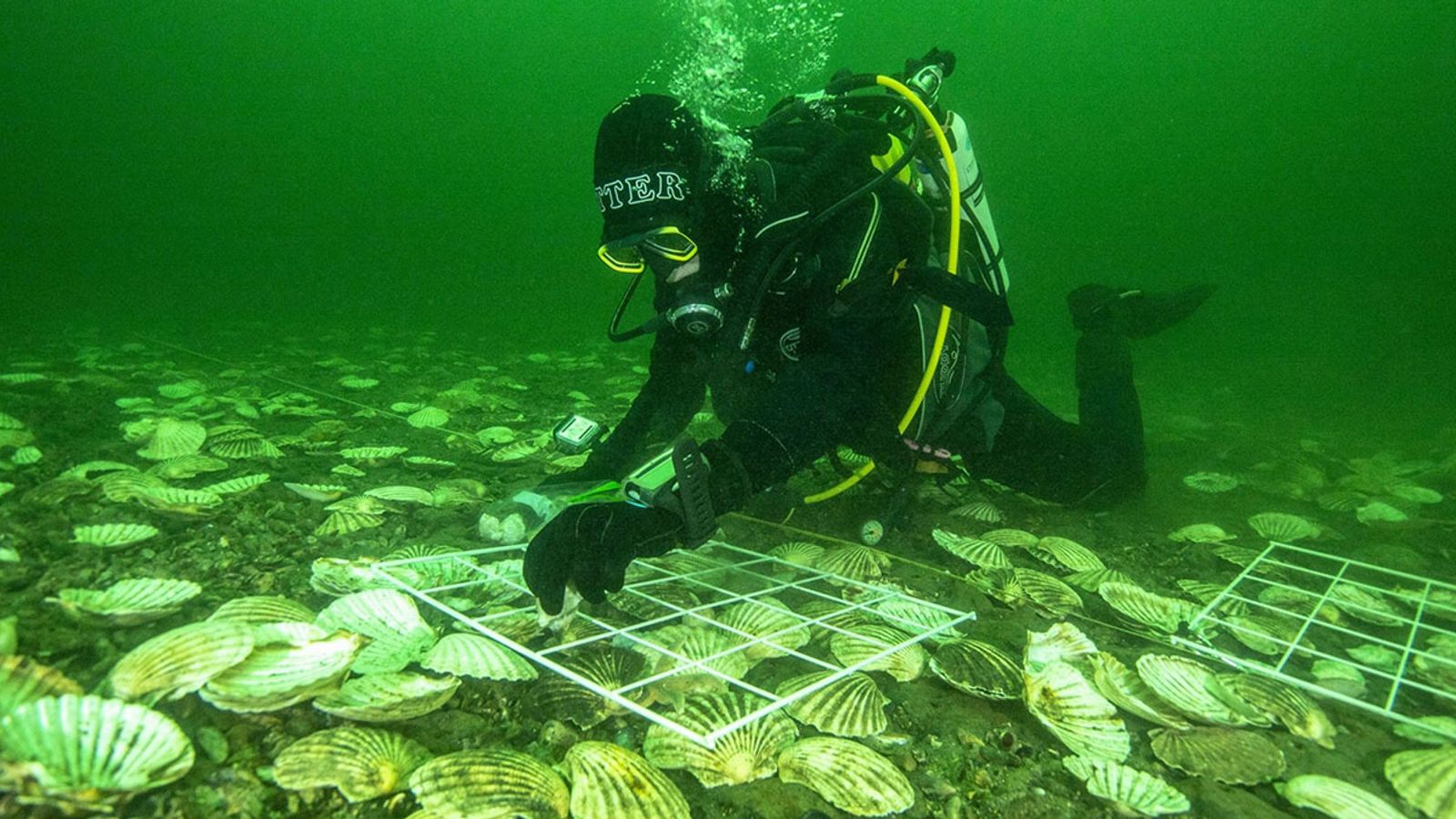The reintroduction of millions of previously extinct oysters to part of the Scottish Highlands is set to transform the area into a bastion of biodiversity, researchers have said.
European native oysters almost became extinct in the UK, the population declining by 95% since the mid 19th century, likely due to overfishing.
It also led to the virtual disappearance of oyster reefs under the seas of Britain’s coastline.
But the Dornoch Environmental Enhancement Project, launched in 2014, will reintroduce four million of them to a protected area of the Dornoch Firth on the banks of Glenmorangie Distillery by the end of the decade.
It is one of a growing number of oyster restoration projects across Europe, which scientists hope will enhance marine biodiversity and improve water quality.
Be the first to get Breaking News
Install the Sky News app for free
To get an idea of the potential impact of the project, researchers from Edinburgh’s Heriot-Watt University studied the biodiversity of Scotland’s last remaining native oyster fishery at Loch Ryan.
It has operated since 1701 and uses what’s called a rotational harvest system – which is when different areas are fished each year and then left to repopulate for six years before they are fished again.
‘Poised to act’ – Environment campaigners could take government to court if it fails to meet carbon emissions targets
Government has presided over ‘lost decade’ and risks exposing UK to climate threats, advisers say
‘Oiled birds’ spotted after ‘potentially catastrophic’ pipeline leak in Dorset
Biodiversity ‘set to double in a decade’
Lead author Naomi Kennon said her university’s work suggested biodiversity where oyster restoration projects were taking place “will likely double over a decade”.
“This means the population of species will increase in a balanced way,” she added.
Ms Kennon’s colleagues examined the impact of oyster reef development and any biodiversity gain at Loch Ryan at different stages after the oyster habitat had been fished.
They looked for faunal biodiversity, oyster shell density, and oyster shell percentage.
Modelling was then used to predict changes in diversity over time.
Calum Duncan, head of Conservation Scotland at the Marine Conservation Society, said: “The study in Loch Ryan shows that increasing the complexity of the seabed allows many species to find refuge in this living reef.”
Marine Conservation Society is collaborating on the project with Heriot-Watt and whisky maker Glenmorangie, which provided funding.
It is hoped that 200,000 oysters will have been restored by the end of next year.








